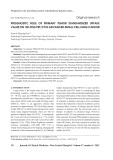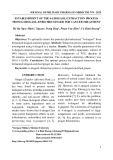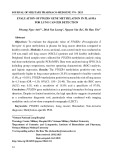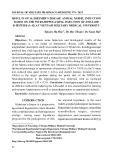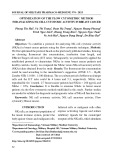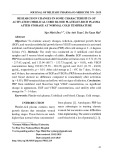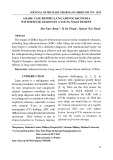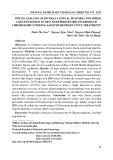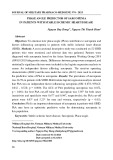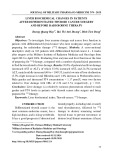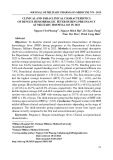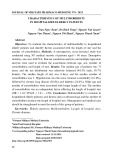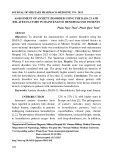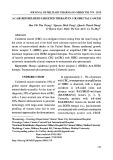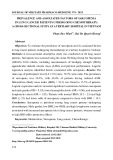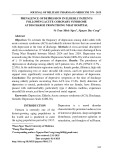
JOURNAL OF MILITARY PHARMACO-MEDICINE N04 - 2025
136
PREVALENCE AND ASSOCIATED FACTORS OF SARCOPENIA
IN LUNG CANCER PATIENTS UNDERGOING CHEMOTHERAPY:
A CROSS-SECTIONAL STUDY AT A TERTIARY HOSPITAL IN VIETNAM
Pham Duc Minh1*, Bui Do Quynh Huong1
Abstract
Objectives: To evaluate the prevalence of sarcopenia and its associated factors
in lung cancer patients undergoing chemotherapy at a tertiary hospital in Vietnam.
Methods: A cross-sectional descriptive study was conducted on 89 lung cancer
patients. Sarcopenia was assessed using the Asian Working Group for Sarcopenia
(AWGS) 2019 criteria, including measurements of handgrip strength (HGS),
appendicular skeletal muscle mass (ASM), and physical performance. Logistic
regression analysis identified factors associated with sarcopenia. Results: The
mean age of participants was 62.6 ± 9.8 years; 78.7% were male. The prevalence
of sarcopenia was 39.3%, with 40.4% of patients having reduced ASM.
Malnutrition (Body mass index (BMI) < 18.5) was found in 15.7% of patients.
Logistic regression analysis revealed significant associations between sarcopenia
and male gender (OR = 8.19), lower hemoglobin levels (OR = 0.96), and increased
lymphocyte counts (OR = 1.05). Patients with normal BMI (18.5 - 23) and high
BMI (≥ 23) had lower odds of sarcopenia compared to those with BMI < 18.5.
Conclusion: Sarcopenia is prevalent among lung cancer patients undergoing
chemotherapy. Male gender, low BMI, low HGB, and high lymphocyte counts are
associated with increased sarcopenia risk in lung cancer patients, whereas normal
to high BMI offers protective effects.
Keywords: Malnutrition; Sarcopenia; Lung cancer; Chemotherapy.
1Department of Nutrition, Military Hospital 103, Vietnam Medical Military University
*Corresponding author: Pham Duc Minh (drminh103@yahoo.com)
Date received: 21/01/2025
Date accepted: 05/3/2025
http://doi.org/10.56535/jmpm.v50i4.1196





